Strengthening Kenya’s laboratory capacity to detect and investigate COVID-19
Summary
- Kenya’s National Influenza Center (NIC) played a key role during the COVID-19 pandemic.
- CDC helped establish the Kenya NIC between 2014 and 2018.
- When the pandemic started CDC Kenya and the Kenya Ministry of Health (MOH) staff collaborated to prepare the NIC laboratory for COVID-19 testing.
- The NIC laboratory detected the first COVID-19 case (caused by the virus SARS-CoV-2) in Kenya on March 12, 2020.
- CDC’s past investments in the NIC were instrumental in strengthening Kenya’s laboratory capacity to detect, investigate, and respond to COVID-19.
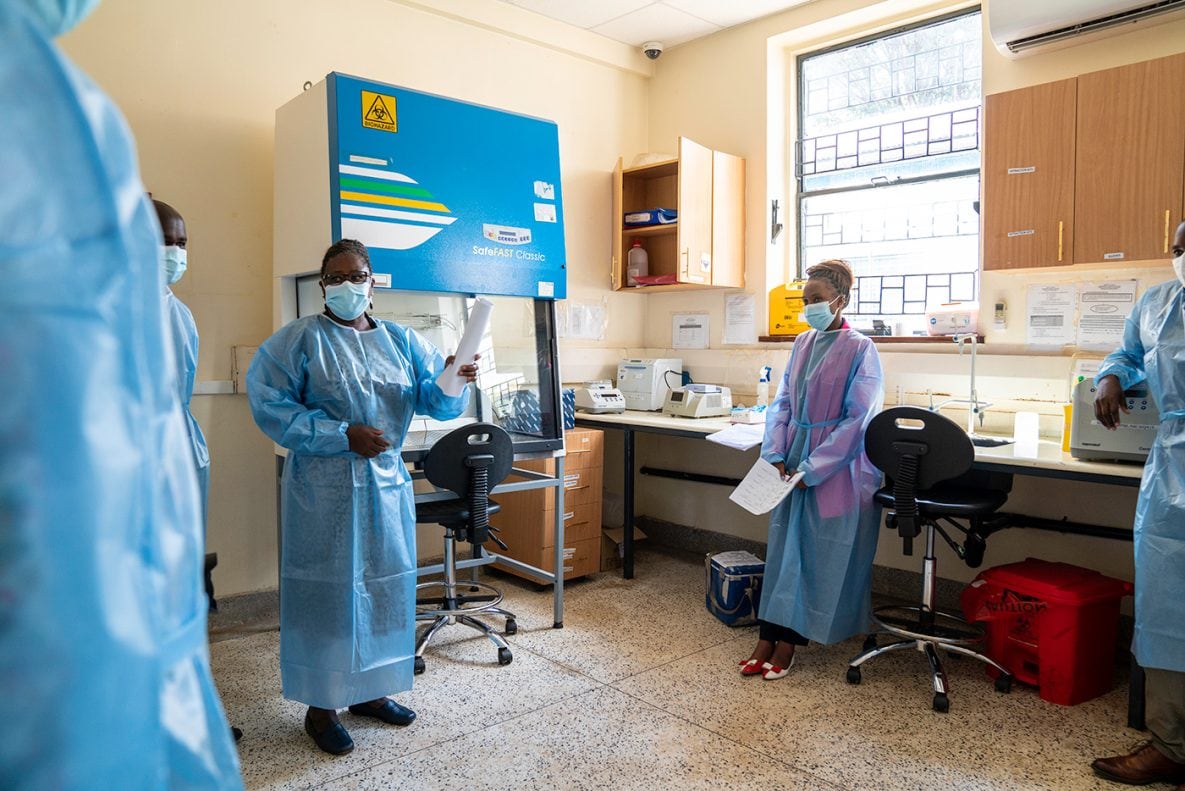
When the first COVID-19 case was detected in China in December 2019, CDC’s office in Kenya (CDC Kenya) and Ministry of Health (MOH) staff prepared the National Influenza Center (NIC) laboratory for testing COVID-19 cases by training staff. They learned about molecular diagnostics including sample collection, packaging, transportation, and testing. The NIC laboratory detected the first COVID-19 case in Kenya on March 12, 2020. Photo: Santos Sanchez/CDC
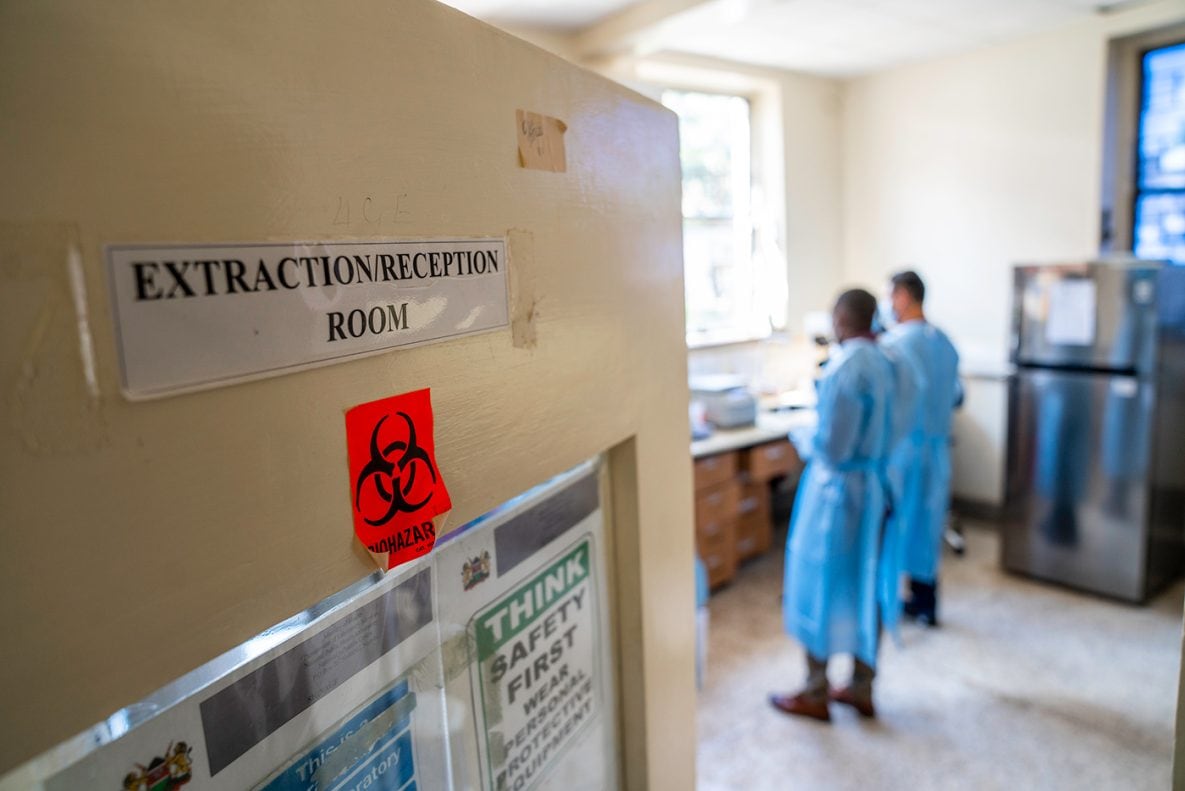
NIC laboratory personnel received training on biosafety/biosecurity and learned how to safely handle and dispose of respiratory virus specimens. Photo: Santos Sanchez/CDC
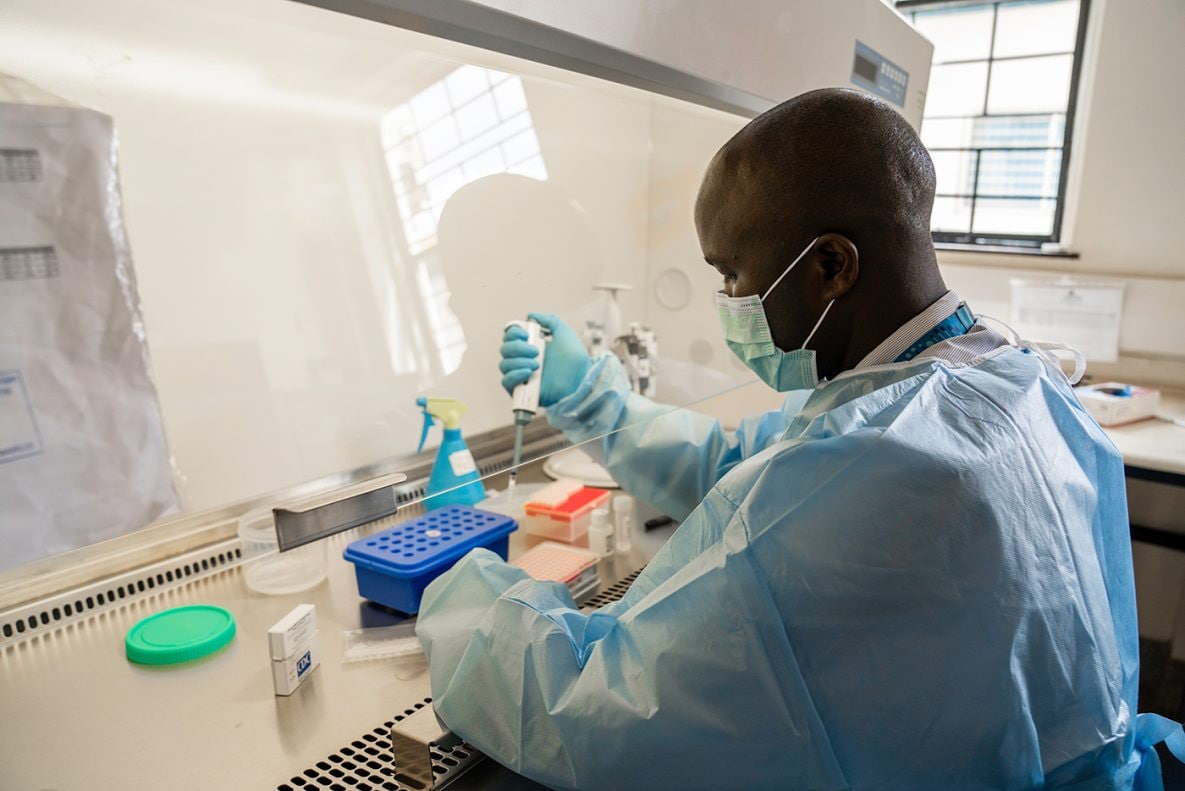
CDC’s investment in the NIC has been instrumental in strengthening Kenya’s laboratory capacity to detect, investigate, and respond to COVID-19 and other pandemics that may emerge or re-emerge. Photo: Santos Sanchez/CDC
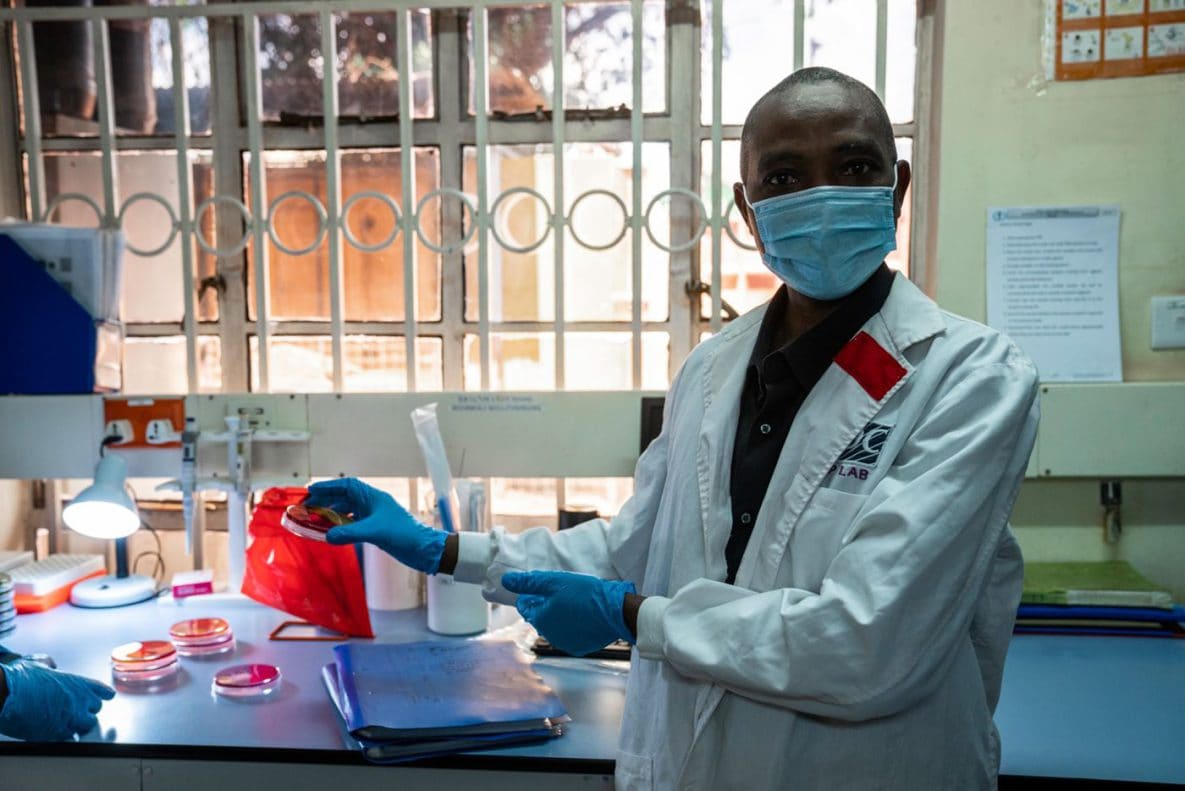
CDC Kenya laboratory leadership offered training on COVID-19 specimen collection, packaging, transportation, testing, and results release. Regional laboratory personnel from across the country in Coastal, Central, Rift Valley, and Western areas of Kenya participated.
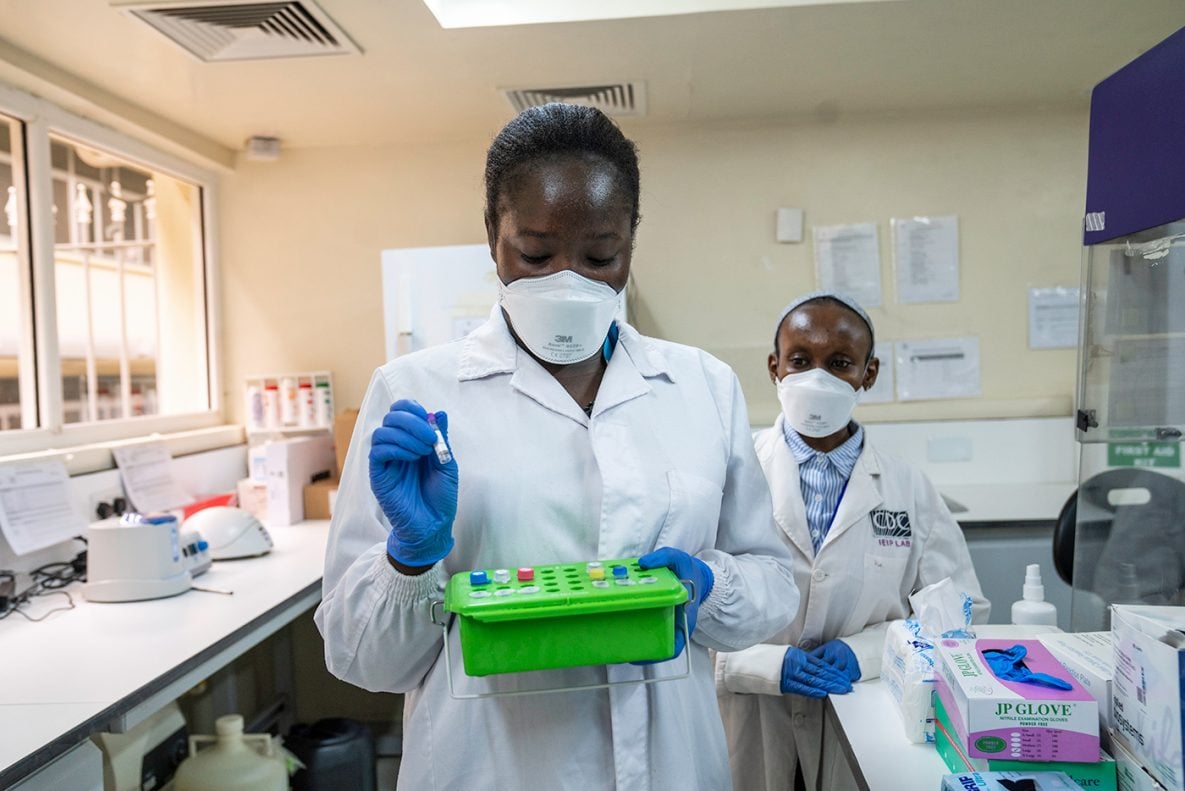
At the height of the pandemic, CDC Kenya labs processed about 52% of COVID-19 national testing at the CDC-supported Kenya Medical Research Institute (KEMRI) and US President’s Emergency Plan for AIDS Relief (PEPFAR) laboratories through 2020 and 2021. These specimens were collected by regional hospitals or facilities and moved to designated laboratories in Kenya for testing. Photo: Santos Sanchez/CDC
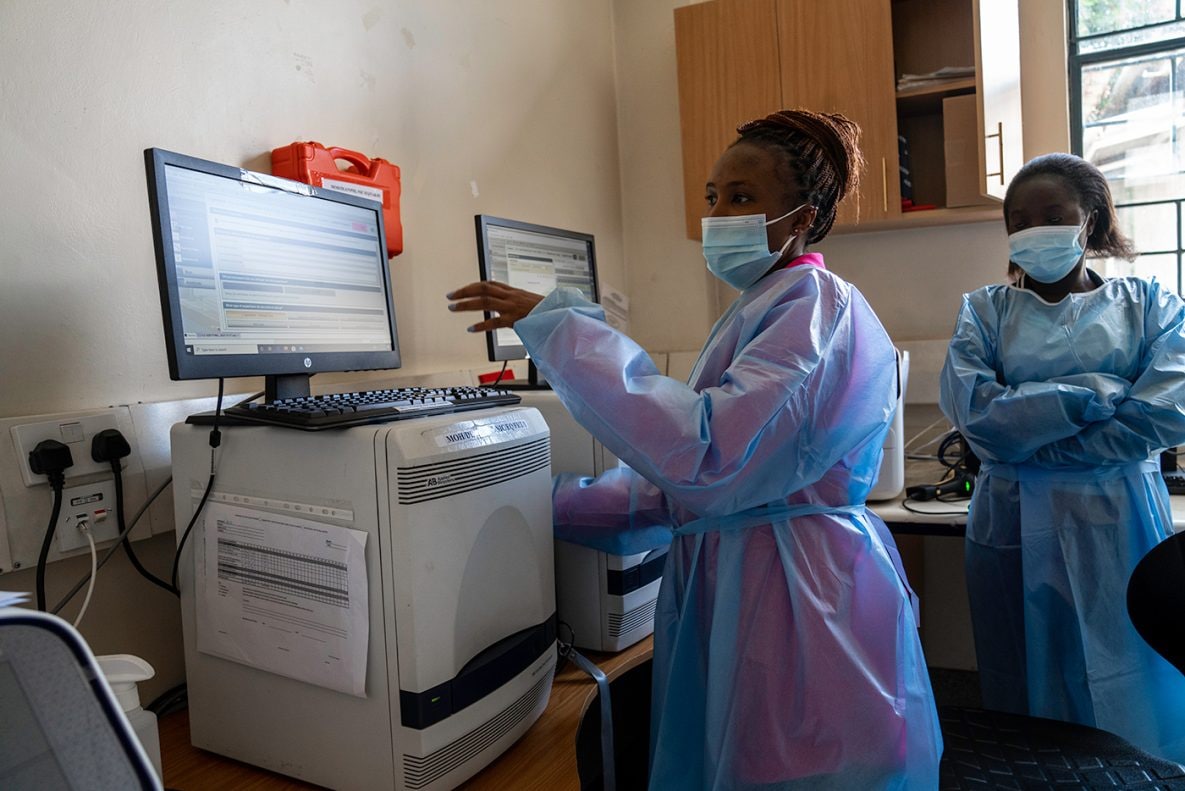
CDC Kenya supported two of the five laboratories that conducted sequencing and contributed data to the national genomic surveillance team to monitor SARS-CoV-2 (the virus that causes COVID-19) variants, which were then reported to Kenya MOH. This genomic surveillance capacity identified the first cases of Delta variant of concern in Kenya. Photo: Santos Sanchez/CDC
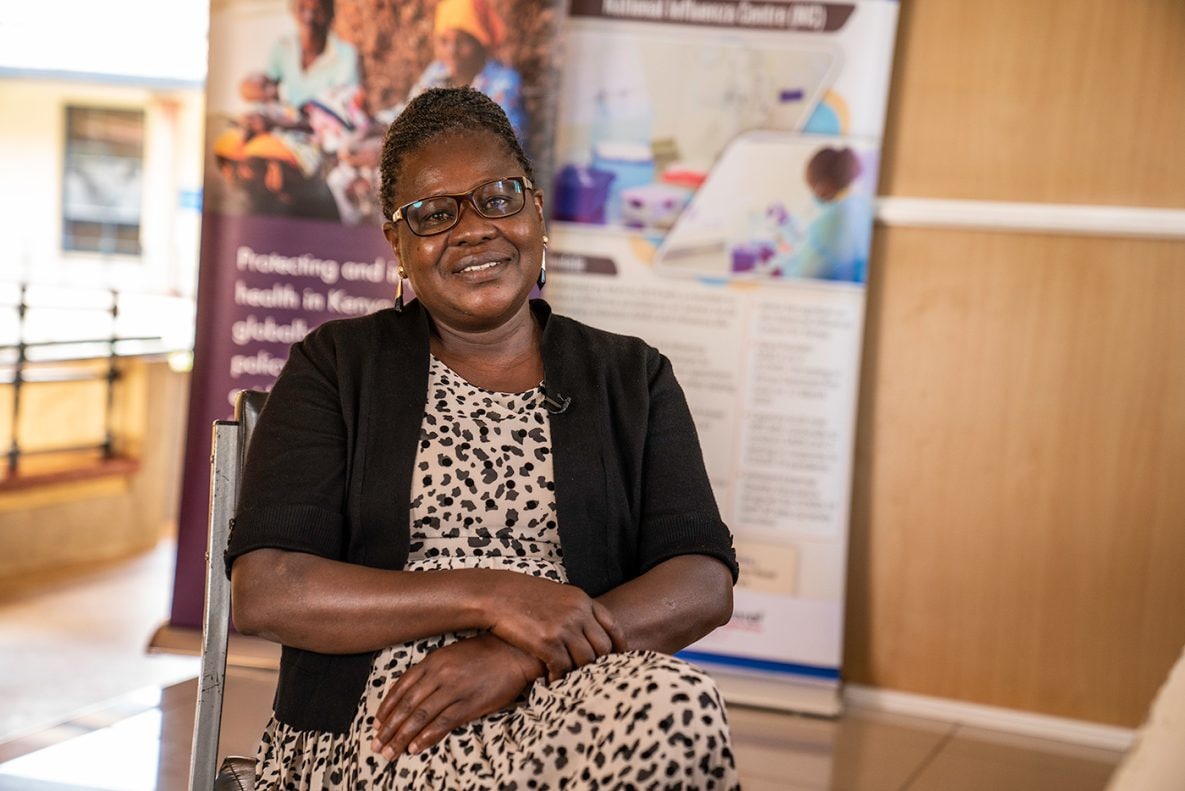
National Influenza Laboratory Manager Mary Okeyo says, “CDC’s investment in the NIC has been instrumental in strengthening Kenya’s laboratory capacity to detect, investigate, and respond to the COVID-19 pandemic and other outbreaks.” Photo: Santos Sanchez/CDC
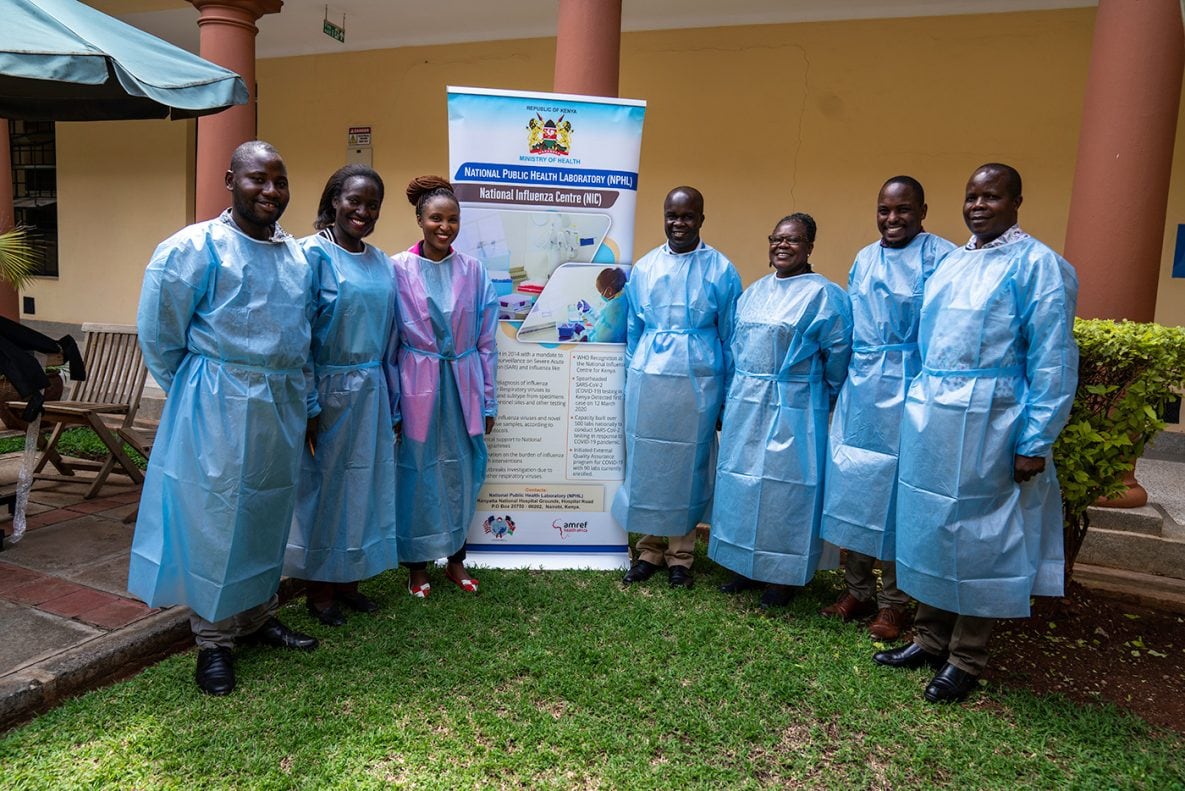
CDC Kenya continues to work with Kenya MOH to support and train NIC and regional laboratory staff to detect infectious diseases, facilitate a public health response, and save lives. Photo: Santos Sanchez/CDC